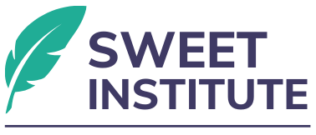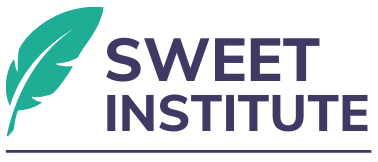The Benefits of Contingency Management
Contingency Management (CM)[1] is a powerful behavioral intervention that leverages positive reinforcement to encourage desirable behaviors. This approach is widely used in various fields, from addiction treatment to educational settings, to enhance outcomes and foster lasting change. Here, we explore the manifold benefits of contingency management, supported by scientific evidence and practical insights.
Improved Treatment Adherence
One of the most significant benefits of CM is its ability to improve treatment adherence.[2] Studies have shown that individuals engaged in CM programs are more likely to attend therapy sessions, take prescribed medications, and comply with treatment protocols. For instance, in substance abuse treatment, CM has been linked to higher rates of attendance and longer retention in treatment programs.
Enhanced Behavioral Change
CM is particularly effective in promoting specific, measurable behaviors. By providing tangible rewards for desired actions, such as maintaining sobriety, completing assignments, or attending school, CM directly motivates individuals to change their behavior.[3] Research indicates that CM can significantly reduce substance use among individuals with addiction, leading to better long-term recovery outcomes.
Immediate and Tangible Rewards
Unlike other therapeutic approaches that may rely on abstract or long-term rewards, CM provides immediate and tangible incentives. This immediacy[4] is crucial in reinforcing the connection between the behavior and the reward, making it more likely that the behavior will be repeated. For example, voucher-based CM programs have been successful in increasing abstinence rates among individuals with substance use disorders.
Flexibility and Adaptability
CM programs can be tailored to suit the needs of different populations and settings. Whether in healthcare, education, or workplace environments, CM can be adapted to target specific behaviors and use contextually appropriate reinforcers. This flexibility[5] makes CM a versatile tool for behavior modification across diverse scenarios.
Positive Reinforcement Over Punishment
CM emphasizes positive reinforcement rather than punishment[6], which can create a more supportive and encouraging environment. This focus on rewarding positive behavior helps build self-esteem and fosters a sense of accomplishment, which is crucial for sustained behavioral change. For example, in educational settings, CM has been used to improve attendance and academic performance by rewarding students for their achievements.
Cost-Effectiveness
While the initial implementation of CM might seem costly due to the need for rewards, it is often cost-effective[7] in the long run. By improving treatment adherence and reducing relapse rates, CM can lower the overall costs of treatment and reduce the burden on healthcare and social services. Studies have demonstrated that CM can result in significant savings by decreasing the need for more intensive and expensive interventions.
Empirical Support and Validation
The effectiveness of CM is well-supported by empirical research[8]. Numerous studies and meta-analyses have validated its efficacy in various settings, particularly in the treatment of substance use disorders. This robust evidence base provides confidence in the reliability and effectiveness of CM as a behavior change strategy[9].
Empowering Individuals
CM empowers individuals by giving them control over their rewards and behavior. This empowerment can lead to a greater sense of agency and motivation, as individuals see the direct impact of their actions on their rewards. This aspect is particularly beneficial in addiction treatment, where individuals often feel a loss of control over their behavior.
Conclusion
Contingency management offers a wealth of benefits, from improving treatment adherence and enhancing behavioral change to providing immediate rewards and fostering a positive, supportive environment. Its flexibility, cost-effectiveness, and strong empirical support make it a valuable tool in various fields. By leveraging the power of positive reinforcement, CM not only helps individuals achieve their goals but also empowers them to take control of their behavior and their future.
[1] Petry, Nancy M., et al. “Contingency management treatments: Reinforcing abstinence versus adherence with goal-related activities.” Journal of consulting and clinical psychology 74.3 (2006): 592.
[2] Pfund, Rory A., et al. “Contingency management for treatment attendance: a meta-analysis.” Journal of Substance Abuse Treatment 133 (2022): 108556.
[3] Davis, Danielle R., et al. “A review of the literature on contingency management in the treatment of substance use disorders, 2009–2014.” Preventive medicine 92 (2016): 36-46.
[4] Rash, Carla J., Sheila M. Alessi, and Kristyn Zajac. “Examining implementation of contingency management in real-world settings.” Psychology of Addictive Behaviors 34.1 (2020): 89.
[5] Zajac, Kristyn, Sheila M. Alessi, and Nancy M. Petry. “Contingency management approaches.” The Routledge handbook of philosophy and science of addiction. Routledge, 2018. 455-463.
[6] Kearney, Christopher A., and Jennifer Vecchio. “Contingency management.” Editors-in-Chief (2002): 525.
[7] Olmstead, Todd A., Jody L. Sindelar, and Nancy M. Petry. “Clinic variation in the cost-effectiveness of contingency management.” American Journal on Addictions 16.6 (2007): 457-460.
[8] Rash, Carla J., Sheila M. Alessi, and Kristyn Zajac. “Examining implementation of contingency management in real-world settings.” Psychology of Addictive Behaviors 34.1 (2020): 89.







